Apple is researching the use of geared hinges that would strengthen a foldable iPhone's screen. These hinges could allow the iPhone to be folded both inwards like a book, and outwards to have a form of wraparound screen.
Apple has previously applied for many patents about a foldable iPhone, ranging from slidable displays and scroll-like screens, to ones with articulated hinges. There are now so many that it's surely certain that a foldable iPhone is coming — but also that these overlapping or conflicting research options can't all be used.
A newly revealed patent application, "Folding Electronic Devices With Geared Hinges," for instance, is similar but seemingly incompatible with prior ones about hinges. This one is unusual, though, in how it covers a hinge option that could allow for the iPhone to be folded in two directions.
"When compact size is desired in a folding configuration, device can be adjusted to be compact by folding portions... together," says the patent application. "Device and display may, as an example, be folded inwardly and/or outwardly about [a] bend axis."
It's highly possible that this description is actually Apple doing what it always does in patents, and attempt to cover every conceivable interpretation of its idea. For example, this patent application's drawings are all about the iPhone, but Apple makes sure it says the foldable display could be for anything from a phone to a laptop, and even goggles or a kiosk.
Nonetheless, this application emphasizes that a device using its method of geared hinges could be made to fold one way and/or the other.
"In inwardly folding configurations," it continues, "two halves of display face each other when device is folded. In outwardly folding configurations, two halves of display face away from each other when device is folded."
Whether Apple decides to make an iPhone that folds one way or two, the key concern of this patent application is to provide the maximum viewable display while not sacrificing portability.
"If care is not taken, a display may not offer sufficient screen real estate to display information of interest to a user," says Apple. "At the same time, it can be difficult to enlarge the size of electronic devices too much to accommodate larger displays, because this can make devices bulky."
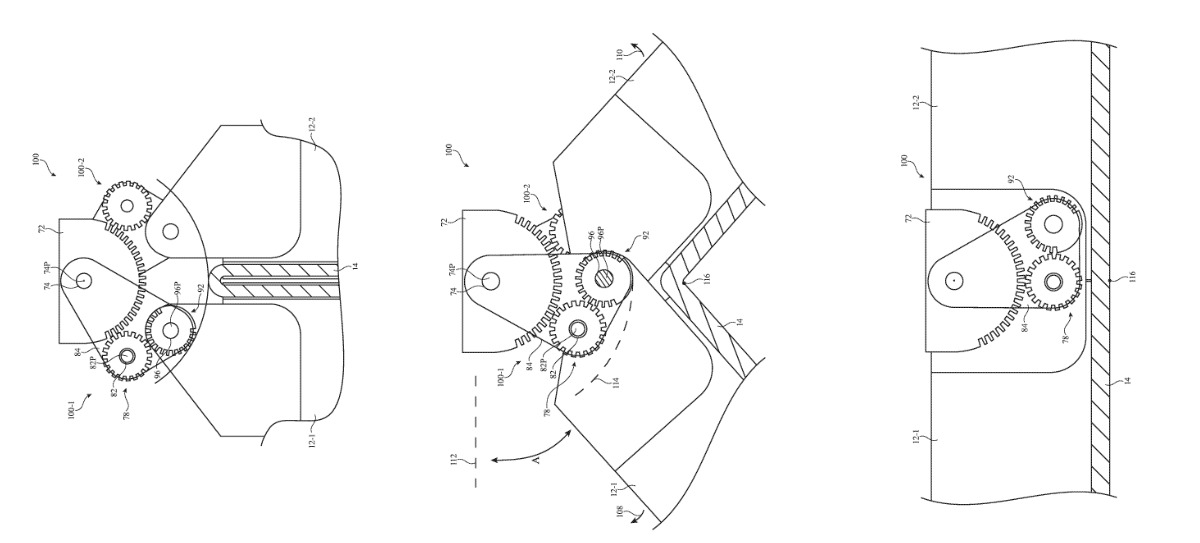 Three separate extracts from the patent drawings show (L-R) a geared hinge moving from folded to unfolded
Three separate extracts from the patent drawings show (L-R) a geared hinge moving from folded to unfoldedApple's proposed solution is to support the large, folded-out display with a hinge that, "may include toothed members such as gears and a rack member." The rack member is the surface that the user sees, the surface that holds the display.
"The rack member may have a surface with curved portions," continues Apple. "The gears may include rotating gears that walk along the curved portions of the rack member as the electronic device is folded and unfolded."
"The hinge may include gears that are fixedly attached to the first and second housing portions and that engage the rotating gears," says the patent application. "Linkage members may hold together the rotating gears, fixed gears, and the rack member."
The most striking part of the idea is that an iPhone could be made where you open it up like a book to read, or you wrap one display around the back of the other. Whether or not Apple chooses to allow both options, this patent application suggests that geared hinges would make any folding screen more robust.
That in theory could apply regardless of which screen technology is used, as the patent application makes sure to say it applies to everything possible. "The display may be an organic light-emitting diode display, a micro-light-emitting diode display formed from an array of crystalline semiconductor light-emitting diode dies, and/or may be any other suitable display," it says.
Previous rumors have said that Apple may have ordered foldable OLED screens from Samsung. Separate reports have said Foxconn is testing the foldable iPhone at present.
The patent application is credited to three inventors, including Michael B. Wittenberg. His previous work includes a related patent application regarding articulated hinges for a foldable iPhone.
 William Gallagher
William Gallagher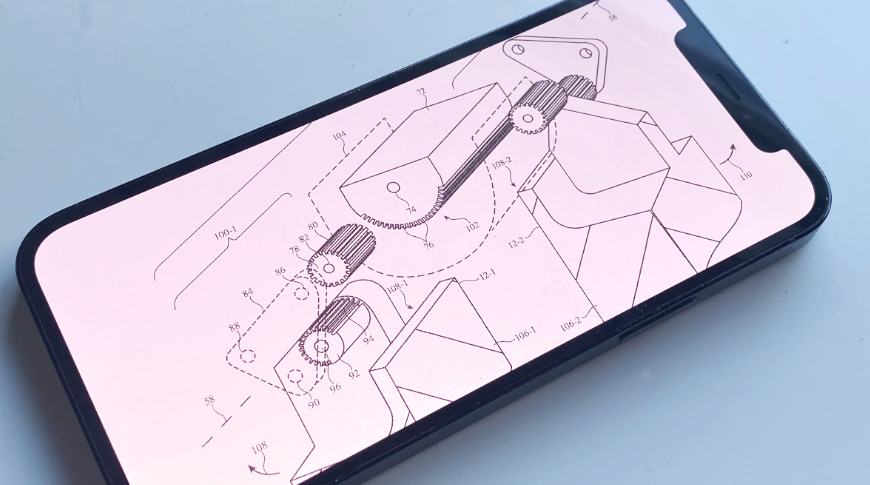







-m.jpg)






 Bon Adamson
Bon Adamson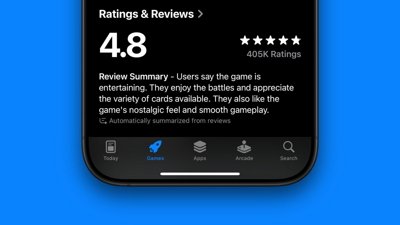
 Marko Zivkovic
Marko Zivkovic
 Wesley Hilliard
Wesley Hilliard
 Amber Neely
Amber Neely

 Malcolm Owen
Malcolm Owen


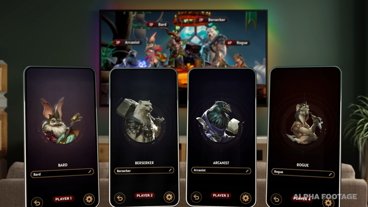
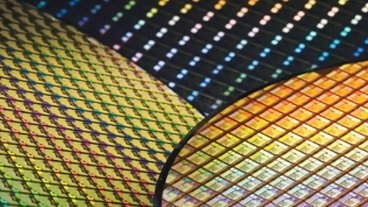


-m.jpg)



16 Comments
Serious question. What type of market is there for a foldable phone?
I can’t think of a practical use case that could justify putting $millions ingot making this a reality. At first glance, I suspect it would be wildly successful just bcoz a) it’s a new Apple product; b) for the novelty/bragging rights; c) we’re in the midst of a pandemic and those that can afford it are looking for something to do with their money.
It has to be a wildly successful toy (and by that, I mean that it won’t really be necessary to get the job done with the current line, if even just a little inconvenient, or it has to be some serious Star Wars shit that we’ve never seen before. Maybe it’s combined with Apple glass? Perhaps a folding pair of glasses? That would be cool.